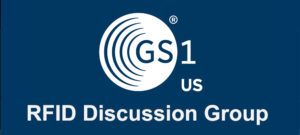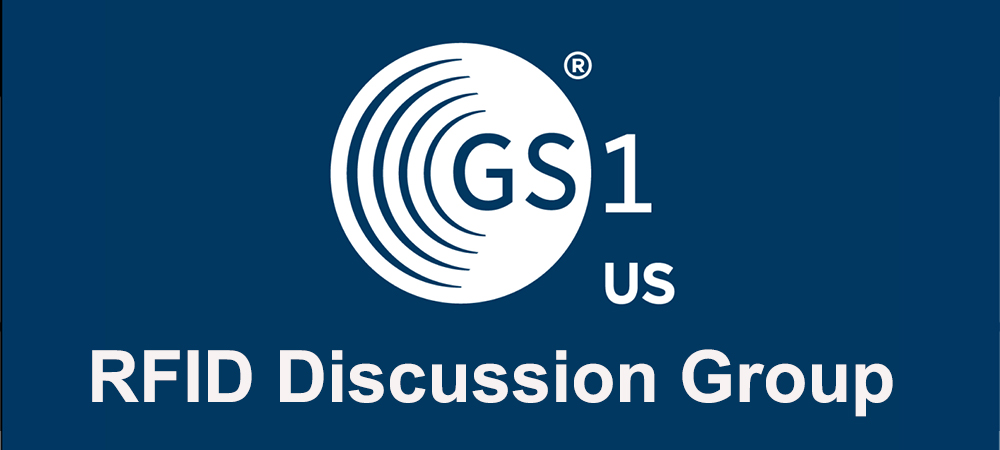RFID Journal LIVE! 2023 will feature end-user companies discussing RFID’s use in various industries, as well as exhibitors offering tagging solutions for multiple applications. To learn more, visit the event’s website.
When GS1 US first envisioned its Cross-Industry RFID Discussion Group, the goal was to determine if companies seeking radio frequency identification (RFID) knowledge could share ideas in a dynamic environment. That was one year ago, and since then the group has held quarterly meetings that the organization says have seen more attendees and engagement with each session. Group members have been reflecting the growing demand for RFID technology, GS1 US reports, and they have been sharing their experiences, as well as starting new conversations.

GS1 is a not-for-profit standards organization for supply chain visibility. Its RFID working group was established to enable dialogs across all industries. These days, the group has 200 members that include end users and solution providers, while discussions have crossed industries from healthcare and pharmaceuticals to fashion and footwear, and food, according to Jonathan Gregory, GS1 US’s director of community engagement.
The group has hosted industry experts such as Bill Hardgrave, president at Auburn University, where the RFID Lab is located, and Mark Roberti, founder of RFID Journal and now a consultant at RFID Strategies. End users have included Matt Alexander, senior director of merchandising innovation at Walmart, as well as executives from pharmaceutical companies, and general retail and apparel companies. In 2022, when the group was launched, Gregory recalls, “I saw a need for pulling the industry together.”
Those seeking information had been coming to GS1 US for support, and Gregory noted that many companies across different industries faced similar challenges. For that reason, he says, “One of the key things about the group is that we’re cross-industry-focused.” That growth across multiple industries reflects how RFID use has expanded over time. “In the past, apparel and general merchandise were the primary industry” to deploy RFID, he notes, but in recent years, “We’re seeing its adoption and interest in healthcare and retail grocery and food service,” among a wide variety of other applications.
Crossing Industries with Common Interests
GS1 US saw an opportunity for fostering dialogues, so Gregory says his inspiration was “Let’s get first-person voices, first-person experiences, and people sharing about their experiences with deploying RFID solutions.” He points to parity between food service and pharmaceuticals when it comes to the requirements for RFID deployments. In those two industries, the technology is being used to capture supply chain data for perishable products. In both scenarios, for instance, brands and retailers need to be able to track the batch or lot, and to recall items.

Jonathan Gregory
The meetings are deliberately cross-industry, Gregory says. Guest speakers have included Walmart, McDonald’s, sporting goods store Decathlon, and drug companies Johnson and Johnson and Fresenius Kabi. Academics also provide feedback, ranging from Auburn University to The University of Memphis and Wright State University. Each quarterly meeting is 90 minutes in length, and most meetings have been held virtually, though in-person events are now being held as well.
At a recent meeting, Wright State University described its use of GS1’s Tag Data Standard (TDS) 2.0 and the encoding attributes related to it—for example, the addition of batch, lot or expiry dates. GS1’s Electronic Product Code (EPC) specifies the way in which data is formatted on a passive UHF RFID tag. TDS 2.0 is an update to the previous version of the standard and is part of a larger EPC modernization program.
TDS 2.0 adds optional encoding of data on the EPC/UII memory bank, to satisfy a wider variety of use-case requirements, while also simplifying encoding and decoding to improve barcode and RFID interoperability. In addition, TDS 2.0 features a date-prioritized serialized global trade identification number (SGTIN) scheme (see GS1 Announces Tag Data Standard Version 2.0 and Standards Group Provides RFID Guidelines for Food Services).
Finding Solutions in Claims Compliance
During one session, Wright State University students demonstrated RFID solutions centered around food and pharmaceutically related, regulatory-driven use cases. Additionally, Fresenius Kabi has provided details regarding its RFID-enabled production line. The group plans to have further discussions about deploying solutions that relate to claims compliance, as well as about supply chain visibility.
In April 2022, GS1 released a Claims Compliance Guideline to avoid and detect carton packing and shipping inaccuracies, enabling users to reduce or minimize administrative efforts related to negotiations and settlements between suppliers and retailers. With the growth of the group, GS1 has also created new membership avenues, such as the GS1 US RFID Implementation program for those interested in accessing some core RFID training.
For participants in the RFID Implementation program, recorded training content is available, as well as access to the Cross-Industry RFID Discussion Group. Membership in the working group is evenly split at present between apparel companies, general merchandise retailers, and food service or retail grocery companies, in addition to healthcare firms and solution providers. The last grouping is slightly larger than the others, according to GS1 US.
The group addresses challenges related to regulatory mandates being planned, or that are already implemented in different sectors. There are a host of such mandates ahead for multiple industries around the world for which RFID can provide a solution, GS1 finds, and these regulations are part of the working group’s discussion. They include the U.S. Food & Drug Administration (FDA)’s Drug Supply Chain Security Act (DSCSA), which was enacted nearly a decade ago and continues to affect how pharmaceutical products are tracked and traced electronically to prevent counterfeit, stolen or contaminated drugs. The final milestone of the DSCSA take effect in November of this year.
Group Discusses Regulatory Compliance Efforts
The FDA has also enacted its Food Safety Moderation Act (FSMA), a set of rules related to food supply chain safety. FSMA Section 204, released in November 2022, identifies foods that require enhanced traceability and recordkeeping to protect public health, including fruits, vegetables and cheeses, along with a timeline for the delivery of those goods. Additionally, the European Union Commission’s Digital Product Passport (DPP) is aimed at enabling a circular economy for more sustainable products and supply chains (see E.U. Digital Passport Workgroups Launching Circular Economy Efforts and AIPIA Congress Reveals Impacts of New Digital Product Passport).
RFID deployment efforts are global, and while the GS1 US working group is U.S.-based, it includes members from other GS1 branches worldwide that are pursuing similar working groups, including in Japan, Australia and the Netherlands. Gregory says he sometimes attends the meetings of these and other GS1 groups as well, in order to learn and share ideas. “There’s an international layer of sharing that occurs,” he explains. A spinoff from the working group at GS1 US is the Geek Spiral Session, a more technical subgroup that explores the finer points of RFID technology development and use.
According to Gregory, the subgroup has been tackling questions such as “If I double my EPC [number], how much longer does it take to encode or decode a tag, and how will it impact assembly line speeds?” Such questions, he says, have led to conversations regarding the technical details of how to best tune an encoding environment in manufacturing, as well as a variety of more detailed electrical engineering-based conversations.
Throughout the past year, Gregory reports, the group has achieved his goal of transferring knowledge and sharing information across industries. “I think it also gives a lot of assurance to companies that are new to RFID,” he states, “when they can walk in the room [physically or digitally] and they say ‘I have Johnson & Johnson, I have Walmart, Decathlon and other companies talking about the value of RFID, and I’m able to ask some questions.'”
The coming year may include more communication around standards development and use cases, Gregory predicts. “We’re going to keep doing it in perpetuity every quarter moving forward,” he states. Another topic will be sustainability and how RFID can benefit companies seeking a lower carbon footprint. One feature RFID offers is waste avoidance, Gregory notes, by helping to identify waste in the supply chain, or at distribution centers or stores. The group is now meeting in person as well, which GS1 says has helped individuals to engage more with the technology.
Key Takeaways:
- GS1 US’s RFID working group is fostering dialogs between technology users with various levels of experience, across multiple industries.
- After one year of meetings, the group indicates it will continue forward based on the previous success of connecting, education and demonstrating the technology.


